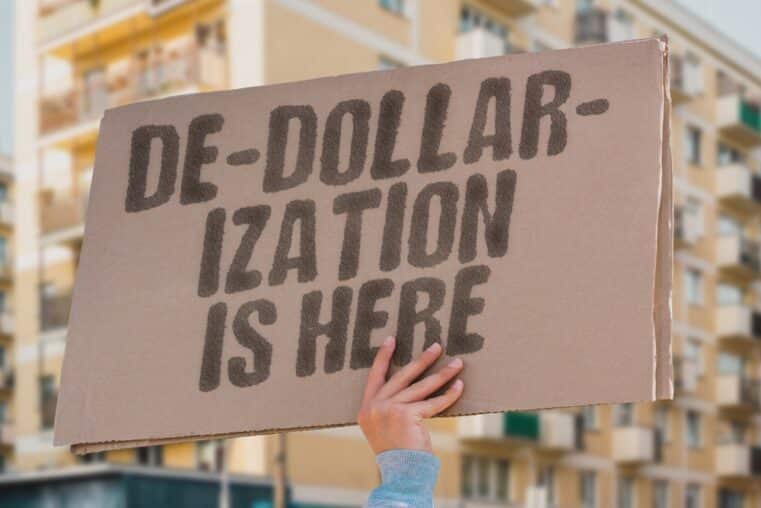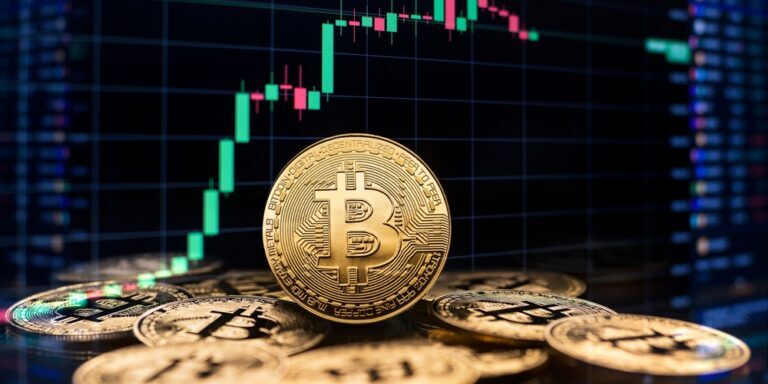
Will Bitcoin be More Scarce (and Valuable) Than Gold?
The Bitcoin halving is due to take place on April 19 or 20, and much has been written about its potential impact on price (reduced supply = increased scarcity = higher price) and miners (reduced reward = lower margins = sector shakeup). There’s a historical roadmap for both of these phenomena and their impact on one another, occurring as they do every four years.
But according to a new report from crypto exchange Bybit, the recent addition of U.S. spot Bitcoin ETFs makes this halving unique and unprecedented, and the final outcome could be no Bitcoin available on any exchange by January 2025.
Bitcoin operates on a set supply schedule, and only 21 million bitcoins will ever exist. When the previous halving took place in May of 2020, it reduced the reward for each mined block of BTC transactions from 12.5 to 6.25 bitcoins. This week’s halving will split it yet again, to 3.125 BTC per block.
“Halving events have had significant implications for Bitcoin’s ecosystem, reducing the rate at which new Bitcoins are created and effectively slowing the supply of new coins entering the market,” the Bybit report stated. “Coupled with increasing demand for Bitcoin, this reduction in supply has historically led to upward pressure on BTC’s price.”
The halving slows the supply of new Bitcoin making it to the market. “Unlike gold and other commodities, Bitcoin becomes more scarce after each halving in terms of less new ‘production’ of Bitcoin,” they wrote. “A stock-to-flow (S2F) model shows that after halvings, Bitcoin becomes scarcer than gold.”
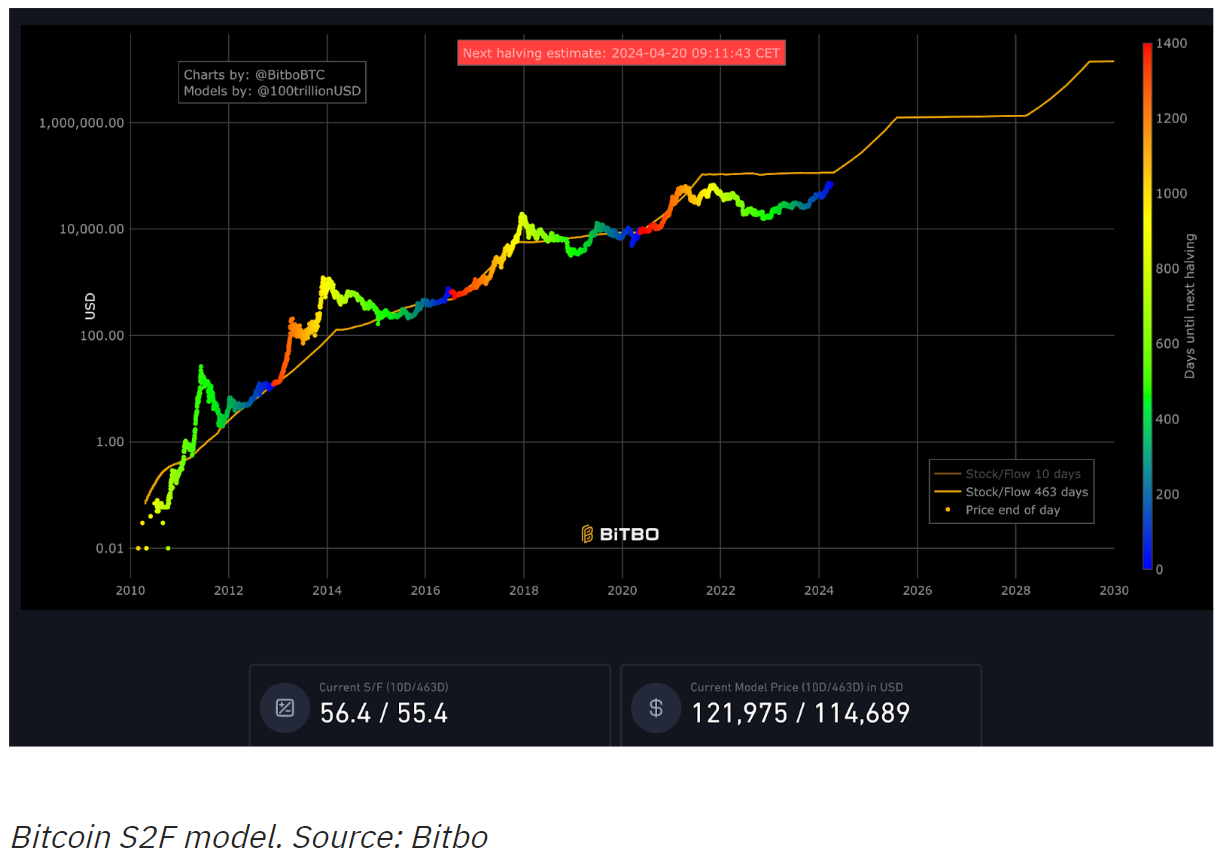
And not just by a little; after the halving, Bitcoin’s stock-to-flow ratio is projected to be nearly double that of gold. “Bitcoin's S2F ratio is around 56 before the upcoming halving, while that of gold is 60,” the Bybit analysts said. “After the halving in April 2024, Bitcoin’s S2F ratio is projected to double to 112.”
The analysts then break down the impact of the halving on Bitcoin both before and after the event itself.
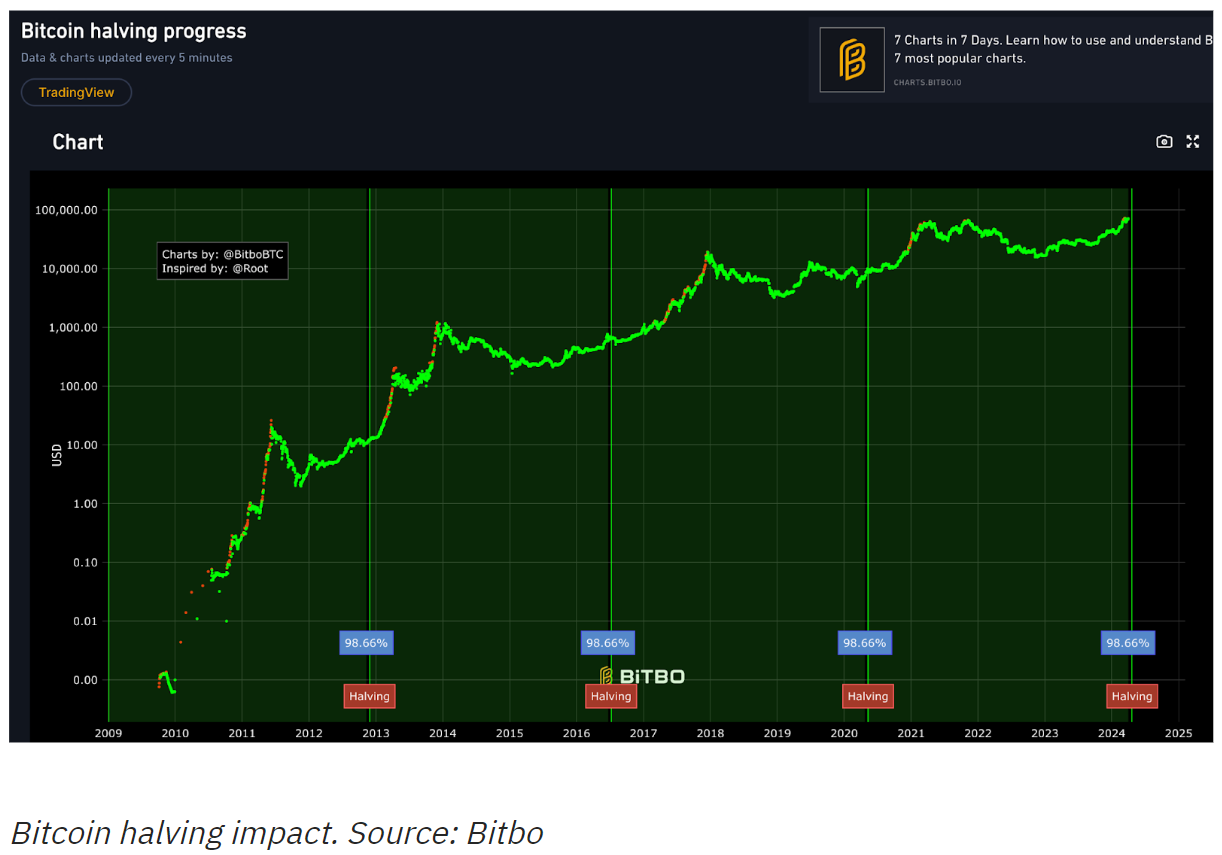
“Before the halving takes place, there’s no impact on the supply side,” they write. “On the demand side, however, investors tend to forerun the halving. With this fourth halving, we’ve noticed an early surge in Bitcoin’s price. Some analysts believe that the early pre-halving increase in Bitcoin’s price indicates that the post-halving price rally will be less remarkable than we’ve come to expect historically.”
Based on the above chart, the analysts said that smart investors will “buy Bitcoin within six months before the halving and hold it for at least 12 months afterward.” They acknowledge, however, that because of the recent spot BTC ETFs in the U.S., “this cycle has become more complex than ever.”
“Bitcoin began to recover in early October last year (2023), approximately six months before the coming April 2024 halving,” they said. “However, it was also in October that large traditional finance giants began applying to run Bitcoin Spot ETFs.”
“As Bitcoin becomes not only the first cryptocurrency but also the first currency with Spot ETFs approved by the SEC, it is seemingly becoming the safest investment choice even for the most sophisticated investors in the crypto field,” they noted. “The price correlation between Bitcoin and the rest of cryptocurrency has been consistently high, and investment in Bitcoin has also been regarded as the cryptocurrency with the lowest beta.”
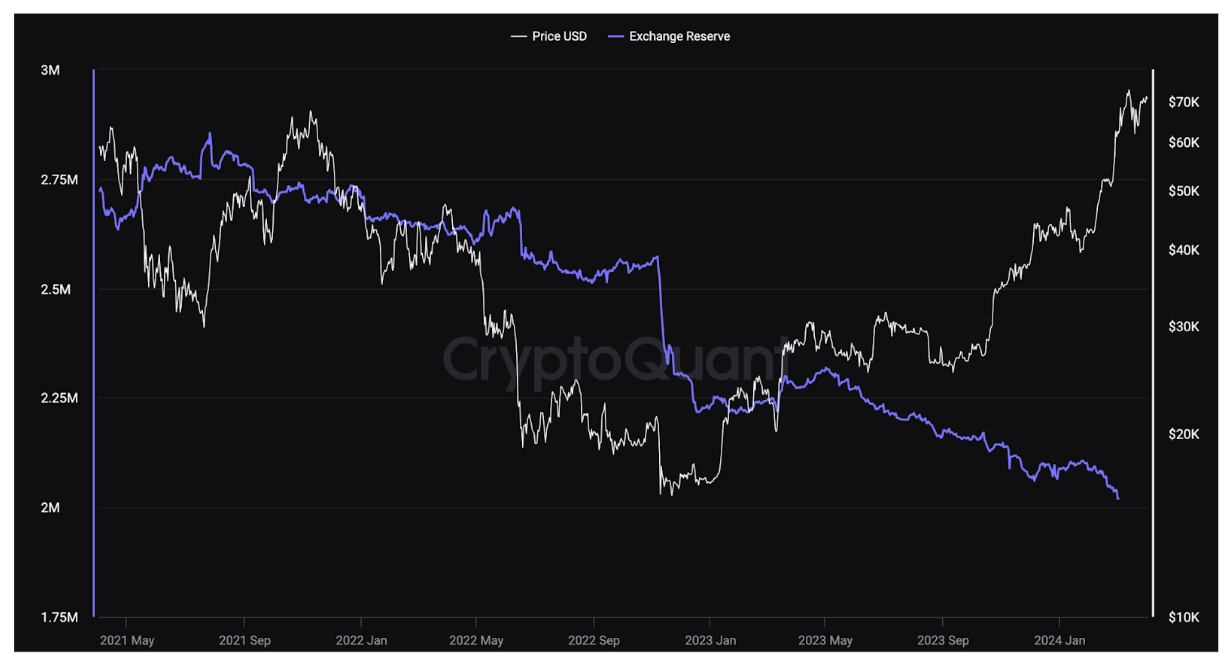
Since the ETFs began trading, the Bitcoin reserves of all centralized exchanges have been depleting faster than in any other cycle, and this new demand is expected to continue as TradFi fires up their sales forces and markets them to capital-rich retirees and other investors. “With only 2 million bitcoins left, if we assume a daily inflow of $500 million to Bitcoin Spot ETFs, the equivalent of around 7,142 bitcoins will leave exchange reserves daily, suggesting that it will only take nine months to consume all of the remaining reserves,” the analysts wrote.
“With this in mind, it’s unsurprising that Bitcoin’s price may continue to climb before the halving, or even afterward, as the supply squeeze propels the price to another new record.”
They also point out that while both TradFi and Web 2.0 institutions have been buying BTC during the six-month pre-halving accumulation phase, “not all institutions have been able to gain exposure since the approval of Bitcoin Spot ETFs in January 2024, as their investment mandates restrict them from investing in new products that have been in the market for only a few months.” This seems to imply that daily demand could be even higher than their $500 million estimate.
All of this is expected to magnify the usual quadrennial supply constraints. “Bitcoin is seeing early signs of a short squeeze,” they wrote. “Post-halving, the supply squeeze will ostensibly be worse. Investors tend to HODL their Bitcoin positions if they’re being held in cold or decentralized wallets. The supply for Bitcoin Spot ETFs is usually from centralized exchanges (CEXs), in which profitable investors realize their profitable positions or successful miners sell their recent rewards.”
“Since mining rewards will be cut in half after the halving, the sell-side supply flowing into the CEXs will be reduced,” the analysts said.
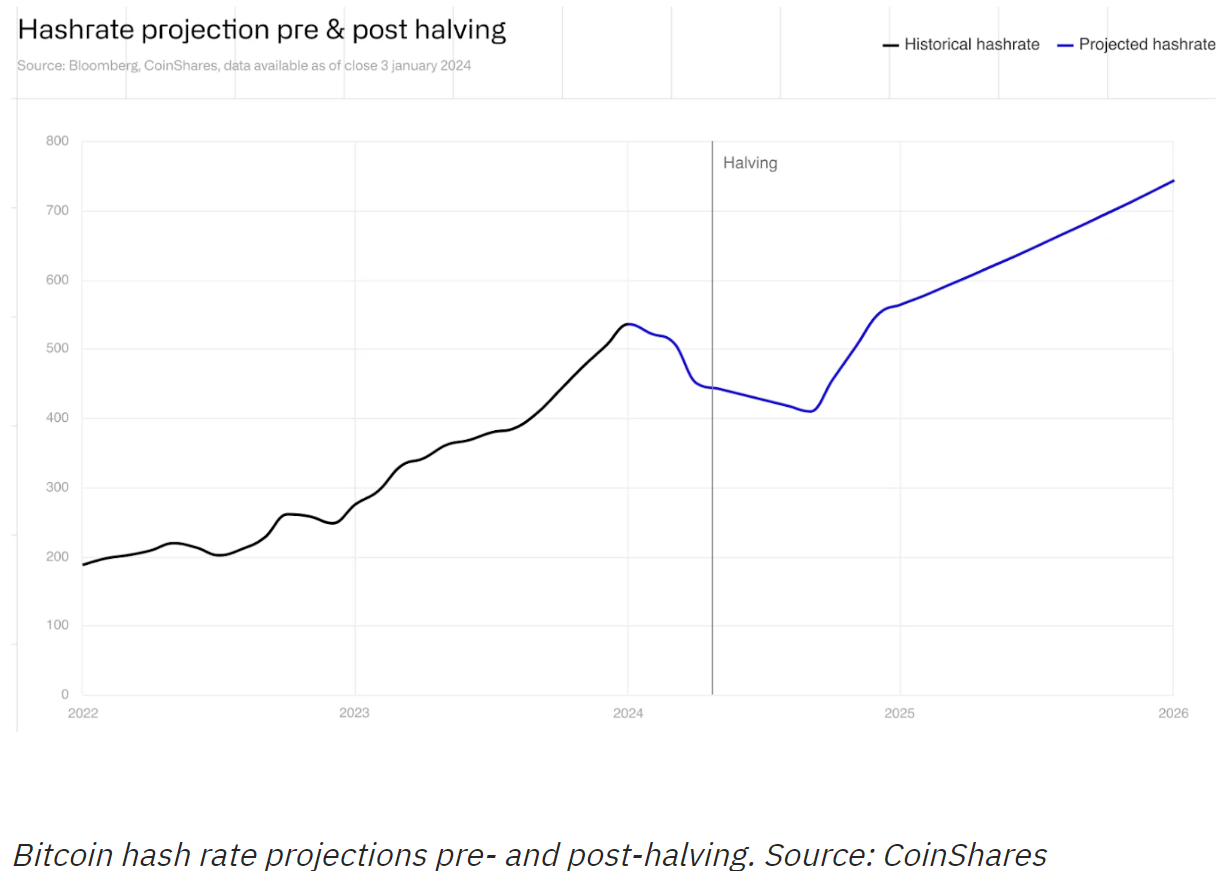
The Bitcoin hash rate is expected to rise sharply after the halving, which will dramatically increase miners' costs of production. “CoinShares estimates that the direct costs of producing one Bitcoin will rise between $28K and $38K following the halving, while JPMorgan Chase & Co. recently predicted a $42K cost per production of one Bitcoin after April 2024,” they wrote. “Only those miners with more advanced rigs and lower indirect costs will be able to survive once Bitcoin’s price drops below $40K.”
“It’s expected that following the halving, unprofitable miners might start selling their Bitcoin reserves in order to support their operations,” the analysts said. “However, once their reserves run out, the overall sell-side supply to CEXs will shrink.”
The Bybit analysts shared the following charts which show that miners have been selling off their reserves in the run-up to this halving (left) at a much faster rate than they did before the 2020 halving (right). This too could serve to magnify the supply crunch post-halving and could result in rapid depletion of CEX reserves.
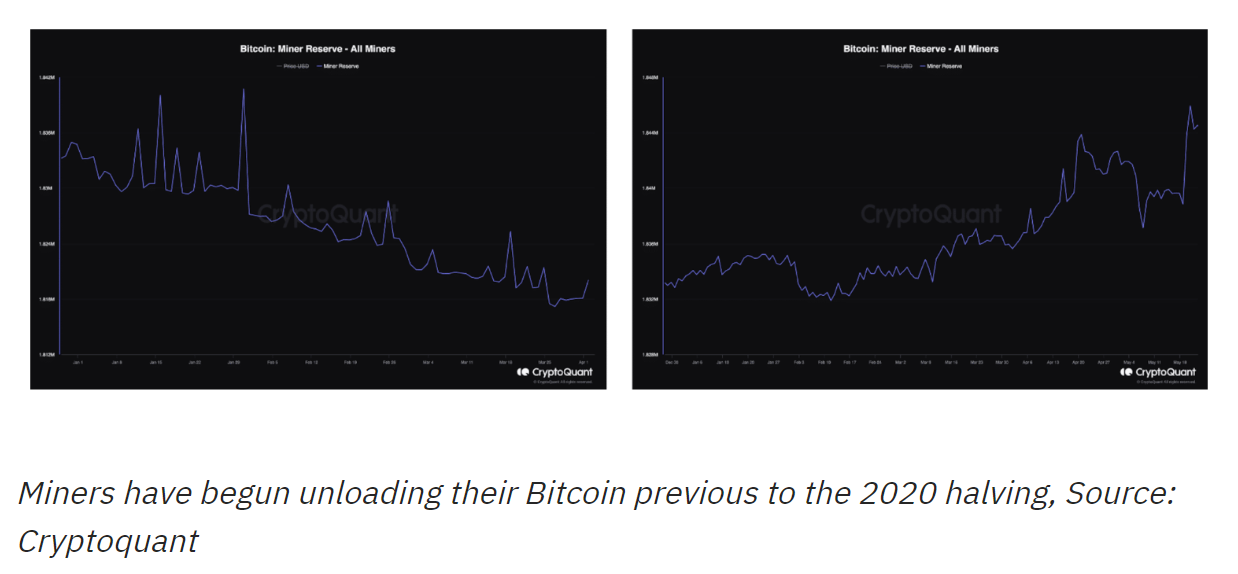
“Meanwhile, the Web 2.0 publicity will center around the Bitcoin halving, leading to FOMO-driven behavior on the part of new investors,” they said.
A key question after the halving will be: How far will Bitcoin’s price climb, and at what price will the cycle peak? No one has a crystal ball. However, our observations of this cycle do lead to a few pieces of advice.
Bybit concludes with some advice based on their analysis.
“[I]t’s wise to take profits half a year after the halving, toward the end of 2024,” they wrote. “The past cycle indicated a twelve-month window after the halving. And yet, we observed more forerunning before the halving, which limits the room for gains post-halving.”
This article originally appeared on Kitco News





